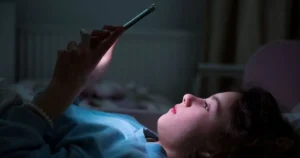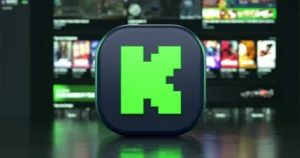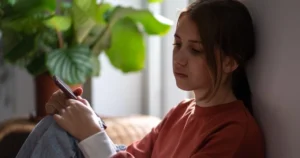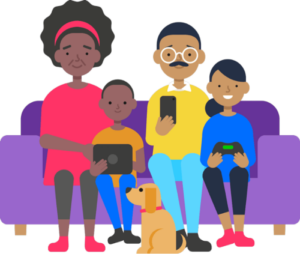Recent reports show an uptick in children and young people targeting teachers on TikTok with manipulated images and videos. While students complaining to each other about a teacher is nothing new, sharing on social media can reach unintended audiences.
Summary
- Children and young people are reportedly targeting teachers on TikTok.
- The abuse can have very real impacts on teachers’ mental health.
- There are a range of resources available to support teachers.
- Many children might not realise the impacts of what they share online.
- You can take action as parents and carers to support teachers.
- Find more resources to support online safety.
What are schools’ experiences?
Children and young people are reportedly targeting teachers on the TikTok entertainment app. They get images of their teachers from their school’s website or videos from their teacher’s online lessons. This imagery is then used to mock or humiliate their teachers online.
Some reports have teachers’ faces being photoshopped or added onto pornographic images while others are being posted on new accounts asking users to ‘rate’ their teachers. Regardless of how they’re used, the images may have negative effects on teachers’ wellbeing and mental health.
In other cases, schools themselves are being impersonated. Users create accounts with the school’s imagery but then posting inappropriate or defamatory content. When parents or other followers believe it’s the actual school, this can affect the school’s reputation in a very real and negative way.
How are targeted teachers impacted?
As in any job, mistreatment in the workplace can lead to mental health issues such as depression and anxiety. According to the NASUWT, the teachers’ union, targeted teachers have reported these feelings along with low self-esteem, fear of teaching or being in front of students, social isolation, self-harm and feelings of suicide.
What support is available to teachers?
TikTok has said, “we are crystal clear that hateful behaviour, bullying and harassment have no place on TikTok. We regret the distress caused to some teachers as a result of abusive content posted to our platform. We’ve already deployed additional technical measures and guidance, and we continue to proactively detect and remove violative content and accounts.”
NASUWT recommends teachers:
- capture evidence of the abuse where possible
- report the abuse to the school
- seek medical advice for impacted mental health
- make a referral to the police if the abuse warrants it and includes a criminal act
- notify the service provider such as the platform the abuse is on
However, the Professional Online Safety Helpline (POSH) is making a point to help teachers who have been impacted by this abuse by reporting on their behalf. They recommend that schools report content on TikTok through POSH.
POSH Lead, Carmel Glassbrook says teachers should “copy the link to the account or the piece of content in question and pop that in an email and send it to us. . . . Then what we’ll do is we’ll use our dedicated trusted flaggers route into TikTok to escalate that content to them.” POSH will give TikTok some context as needed to demonstrate why and how it breaches the app’s terms of service before sending it off.
POSH also provides helpline services for professionals that teachers can utilise if they need someone to talk to.
Why are young people sharing these videos?
Most children and young people posting this content don’t understand the severity of their actions. Instead, they see it as a harmless joke that will never get back to the targeted teachers.
What they may not realise is that these videos are examples of bullying because it is towards an authority figure rather than a peer. In many cases, children are horrified when they realise how negatively it has affected and impacted their teachers or schools.
How might young people be impacted?
Some schools have responded with threats of exclusion while others have involved police action.
The videos are very serious in nature, and schools want to support their staff to the best of their ability. Filming others on school grounds is not permitted, especially without consent. Schools are also calling on parents to help support teachers by talking about social media use and what is and isn’t appropriate to post online.
How parents can support teachers
- Have productive conversations about cyberbullying with your child. Remind them that bullying can happen between anyone, not just other children. Ensure they understand the impact this content has on their teachers.
- Talk about what is and isn’t appropriate to share online. It’s important for them to know that taking or using pictures or videos of anyone without their consent is not positive behaviour.
- Help them support their teachers. If they see someone posting content about their teacher or making negative comments about them, they need to be an upstander and take action. Remind them that a bystander contributes to the bullying by staying silent.
- Encourage your child to report inappropriate or bullying content that targets teachers. They can do this by reporting on the app itself, by telling the school, or by asking for your help in reporting through POSH or the school.









